
Life Cycle, Urban Housing
Downtown District, Newark. USA, Fall 2010
Instructor: Scott Erdy
The Newark Revolution of 1967 left twenty-six people dead, 800 injured and 1800 arrested. Fueled by years of racial discrimination, substandard living conditions and civic under-representation, the six-day conflict ranked among the most deadly and destructive of the 1960s urban uprisings. Many argue that downtown Newark has yet to recover from this devastating event. Plagued by crime, corruption and nepotism, the city has continued its downward spiral for 40 years. The lack of safe and affordable housing continues to contribute to Newark’s inability to rebuild strong neighborhoods within the urban core.
Newark, however, is poised for a comeback. The 2006 election of Mayor Cory Booker has brought great hope to the City of Newark and its chances for revitalization. In support of this revitalization we will develop prototypical housing types for three separate sites within the central business district of Newark, New Jersey.
Newark has had couple of main problems, increasing poverty rates and decreasing the number of pupulation since 1960’s. These have led lack of investment and vicious circle of poverty. The site is located in historic district as well as entertainment one in Newark. Housing is a kind of shelter containing potential customers in cities. I should decide the types of residents depending on their income, and offer or fulfill their needs in order to attract their interests.
Targets for this urban housing are elderly people and college students of several universities and colleges nearby, as well as business people who work for banks and insurance companies, primarily because the site is very close to airport and train station. Also, this is a safer zone, in comparison with other zones located in western or southern part of Newark.
These different types of users mingle with each other or are separated in hierachy of open spaces verically and horizontally linked through or around circulations and in the process of respecting existing conditions including urban history. This quilting urban texture and different types of users will be one seed as a starting point to rehabilitate Newark.
Downtown District, Newark. USA, Fall 2010
Instructor: Scott Erdy
The Newark Revolution of 1967 left twenty-six people dead, 800 injured and 1800 arrested. Fueled by years of racial discrimination, substandard living conditions and civic under-representation, the six-day conflict ranked among the most deadly and destructive of the 1960s urban uprisings. Many argue that downtown Newark has yet to recover from this devastating event. Plagued by crime, corruption and nepotism, the city has continued its downward spiral for 40 years. The lack of safe and affordable housing continues to contribute to Newark’s inability to rebuild strong neighborhoods within the urban core.
Newark, however, is poised for a comeback. The 2006 election of Mayor Cory Booker has brought great hope to the City of Newark and its chances for revitalization. In support of this revitalization we will develop prototypical housing types for three separate sites within the central business district of Newark, New Jersey.
Newark has had couple of main problems, increasing poverty rates and decreasing the number of pupulation since 1960’s. These have led lack of investment and vicious circle of poverty. The site is located in historic district as well as entertainment one in Newark. Housing is a kind of shelter containing potential customers in cities. I should decide the types of residents depending on their income, and offer or fulfill their needs in order to attract their interests.
Targets for this urban housing are elderly people and college students of several universities and colleges nearby, as well as business people who work for banks and insurance companies, primarily because the site is very close to airport and train station. Also, this is a safer zone, in comparison with other zones located in western or southern part of Newark.
These different types of users mingle with each other or are separated in hierachy of open spaces verically and horizontally linked through or around circulations and in the process of respecting existing conditions including urban history. This quilting urban texture and different types of users will be one seed as a starting point to rehabilitate Newark.
Publication

“I have worked here since 1993. At that time, there were so many people on the street, and our business was lucrative. From the beginning of 2000, people began going away because of their problem with mortgage. So, now this town has become empty as you can see. However, I hope the Prudential Center would bring people here again.”
This statement was from a clerk of a dress shop and located on Market Street in CBD (Central Business District) of Newark. There are about twenty teenagers on Market Street, and I thought there was a high school nearby. However, I could hear a police siren and three police men riding motor cycle chasing them. These running teenagers passed by me. I was shocked and couldn’t move, I stood still at the spot in front of a vacant building for a while until they were gone. Emptiness and un-safety, these are my first impressions about Newark. I remember a speech from a man of ‘Street Warrior,’ which is a nonprofit organization for reducing crime rate in Newark in the movie, “Brick City”. He mentioned, while showing a bunch of cakes for teenagers in poverty, ‘these cakes will cut the crime rate.’ He believes that the majority of juveniles’ crimes are from hunger.
With these problems in the city of Newark, what should architects do here? Although most people want an architecture that can solve their problems, I have a different opinion. Peter Eisenman said that “it(architecture) does not solve problems; it creates problems(functions)” during his interview in New York, October 2003. Thus, I have to focus on making other problems, that is, functions in order to eliminate their existing problems.
The site I chose is located nearby Market Street and Broad Street in the historic district as well as entertainment one in the Master plan of Newark. What function or benefit does housing give to a neighborhood? I think of housing as a kind of shelter containing potential customers.
So, at first, I should decide the types of residents depending on their income, and offer or fulfill their needs in order to attract their interests. My target will be students of the ‘University of Medicine and Dentistry of New Jersey’ and other Colleges, as well as office workers who work for banks and insurance companies, primarily because the site is very close to ‘Newark Liberty International Airport’ and ‘Newark Penn Station’. Also, definitely, this is a safer zone, in comparison with other zones located in western or southern Newark.
According to recent business journals, financial aid has soared because ‘college enrollment is soaring because many businesspeople are going back to school for retraining and many current students are staying in school longer, pursuing graduate-level degree as they wait for the job market to rebound, and more families are struggling with unemployment and tighter finances in an economic recession, so more students qualify for financial aid’. Thus, those additional federal and state financial aid and scholarship dollars flow to local businesses, ‘helping fuel the region’s economy. For example, the population in the city of Richmond swells when college students return for the start of another school year. Also, there is about 20% increase in local sales when about 16,000 students come back.
This statement was from a clerk of a dress shop and located on Market Street in CBD (Central Business District) of Newark. There are about twenty teenagers on Market Street, and I thought there was a high school nearby. However, I could hear a police siren and three police men riding motor cycle chasing them. These running teenagers passed by me. I was shocked and couldn’t move, I stood still at the spot in front of a vacant building for a while until they were gone. Emptiness and un-safety, these are my first impressions about Newark. I remember a speech from a man of ‘Street Warrior,’ which is a nonprofit organization for reducing crime rate in Newark in the movie, “Brick City”. He mentioned, while showing a bunch of cakes for teenagers in poverty, ‘these cakes will cut the crime rate.’ He believes that the majority of juveniles’ crimes are from hunger.
With these problems in the city of Newark, what should architects do here? Although most people want an architecture that can solve their problems, I have a different opinion. Peter Eisenman said that “it(architecture) does not solve problems; it creates problems(functions)” during his interview in New York, October 2003. Thus, I have to focus on making other problems, that is, functions in order to eliminate their existing problems.
The site I chose is located nearby Market Street and Broad Street in the historic district as well as entertainment one in the Master plan of Newark. What function or benefit does housing give to a neighborhood? I think of housing as a kind of shelter containing potential customers.
So, at first, I should decide the types of residents depending on their income, and offer or fulfill their needs in order to attract their interests. My target will be students of the ‘University of Medicine and Dentistry of New Jersey’ and other Colleges, as well as office workers who work for banks and insurance companies, primarily because the site is very close to ‘Newark Liberty International Airport’ and ‘Newark Penn Station’. Also, definitely, this is a safer zone, in comparison with other zones located in western or southern Newark.
According to recent business journals, financial aid has soared because ‘college enrollment is soaring because many businesspeople are going back to school for retraining and many current students are staying in school longer, pursuing graduate-level degree as they wait for the job market to rebound, and more families are struggling with unemployment and tighter finances in an economic recession, so more students qualify for financial aid’. Thus, those additional federal and state financial aid and scholarship dollars flow to local businesses, ‘helping fuel the region’s economy. For example, the population in the city of Richmond swells when college students return for the start of another school year. Also, there is about 20% increase in local sales when about 16,000 students come back.



design process

basic units: type A, B, C
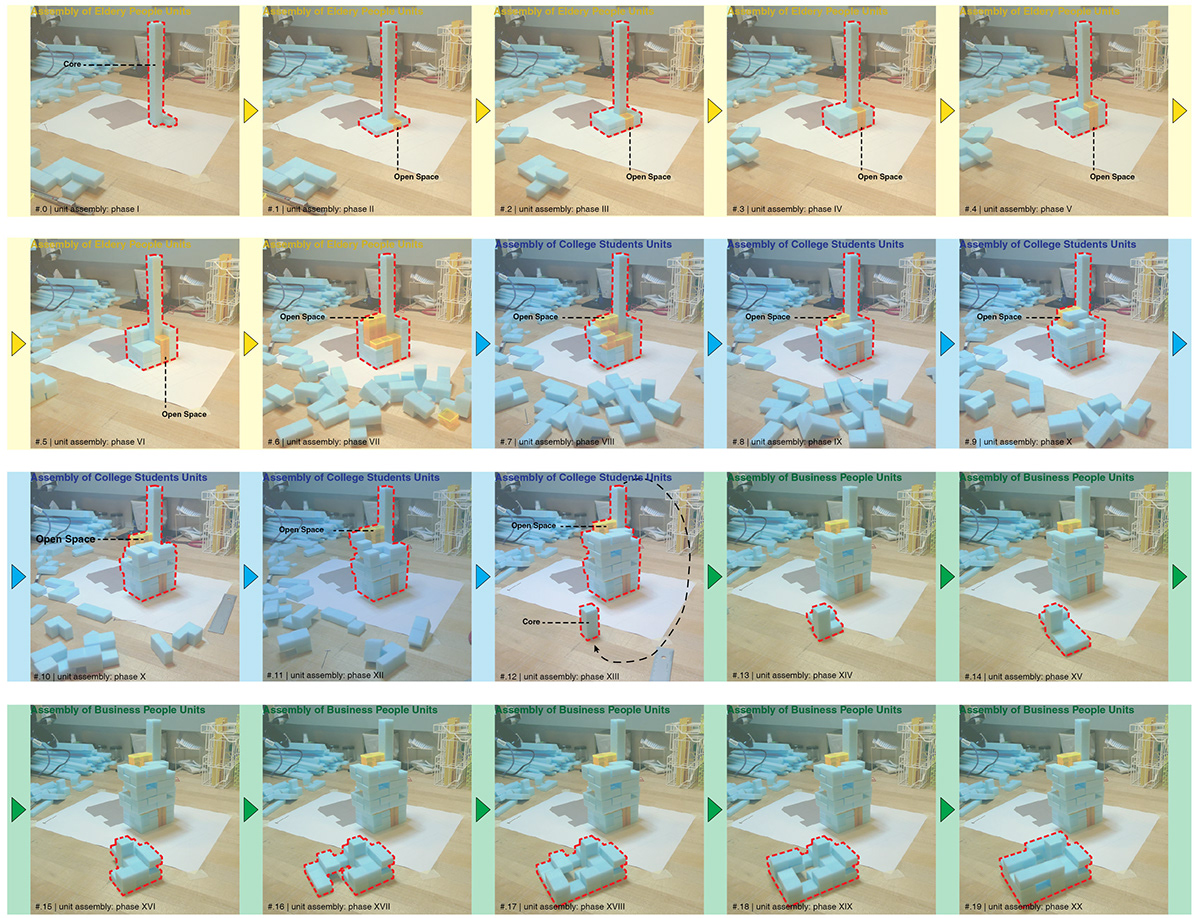
process of unit assembly

structural system: shear wall core structure
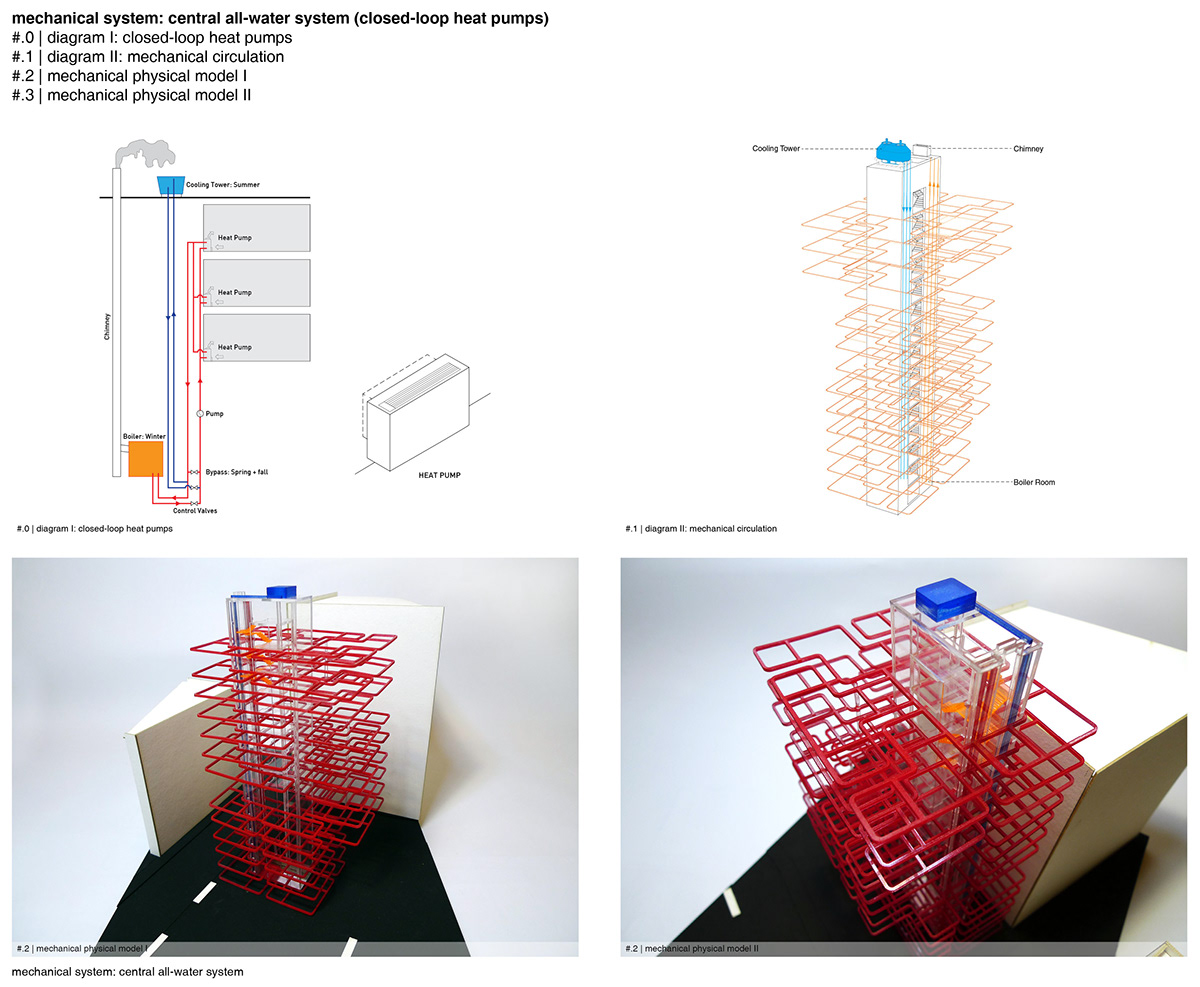
mechanical system: central all-water system

circulation diagram

physical model: circulation

overall floor plans



floor plans & open space II: atrium + circulation (C)

section
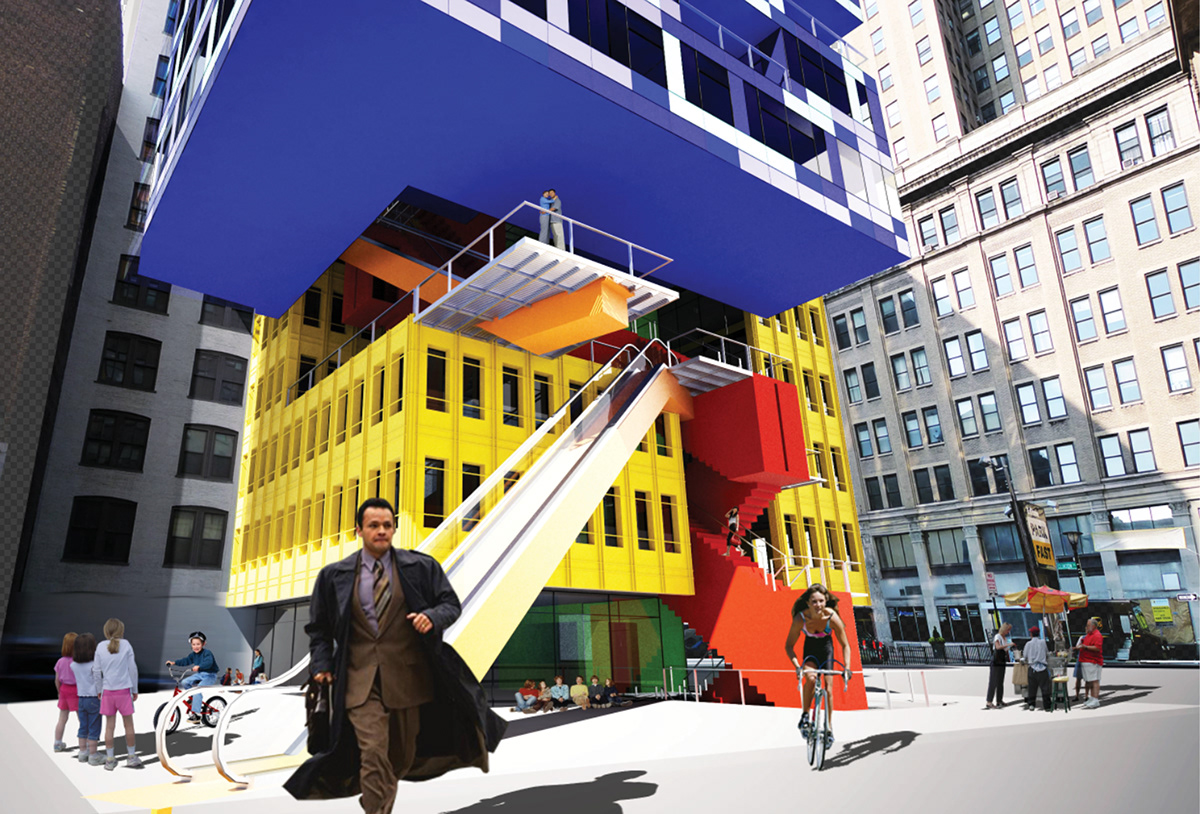
open space I: entrance + plaza (A)

vertical open space: circulation (B)
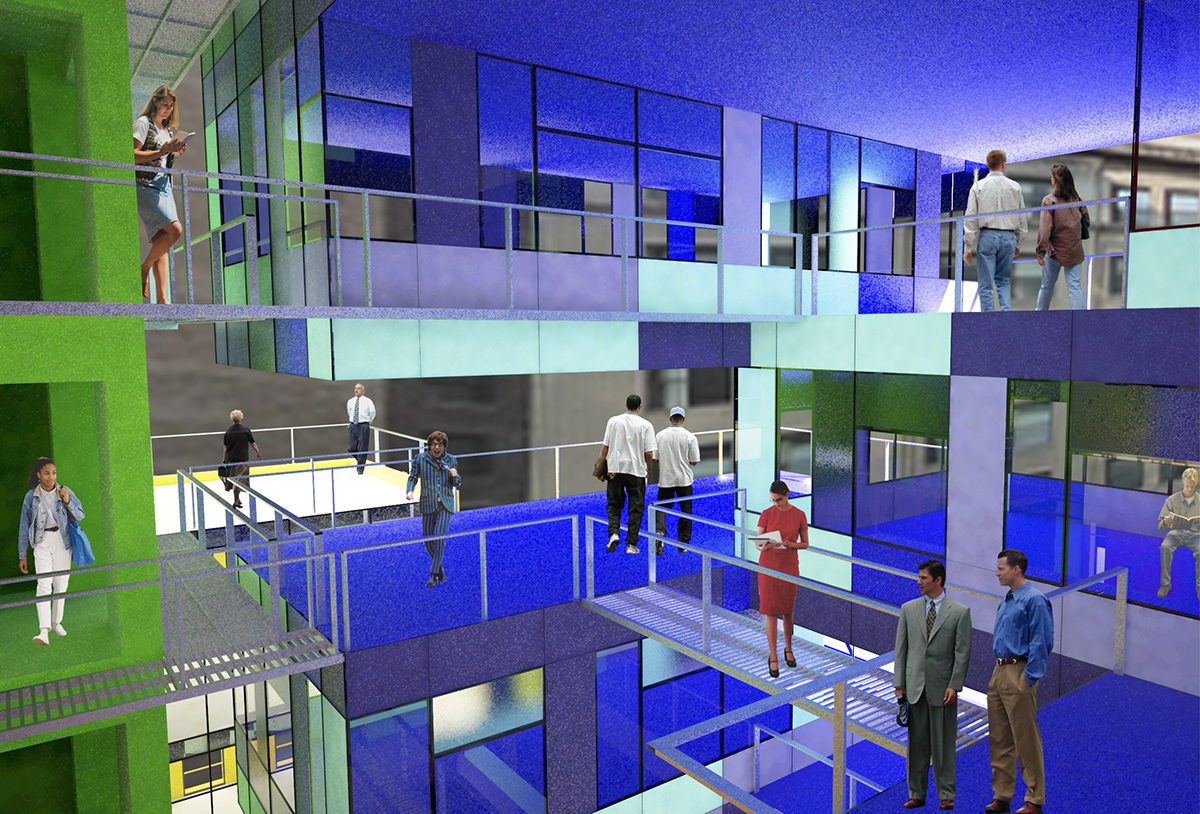
open space II: atrium + circulation (C)

open space III: roof deck I_(D)
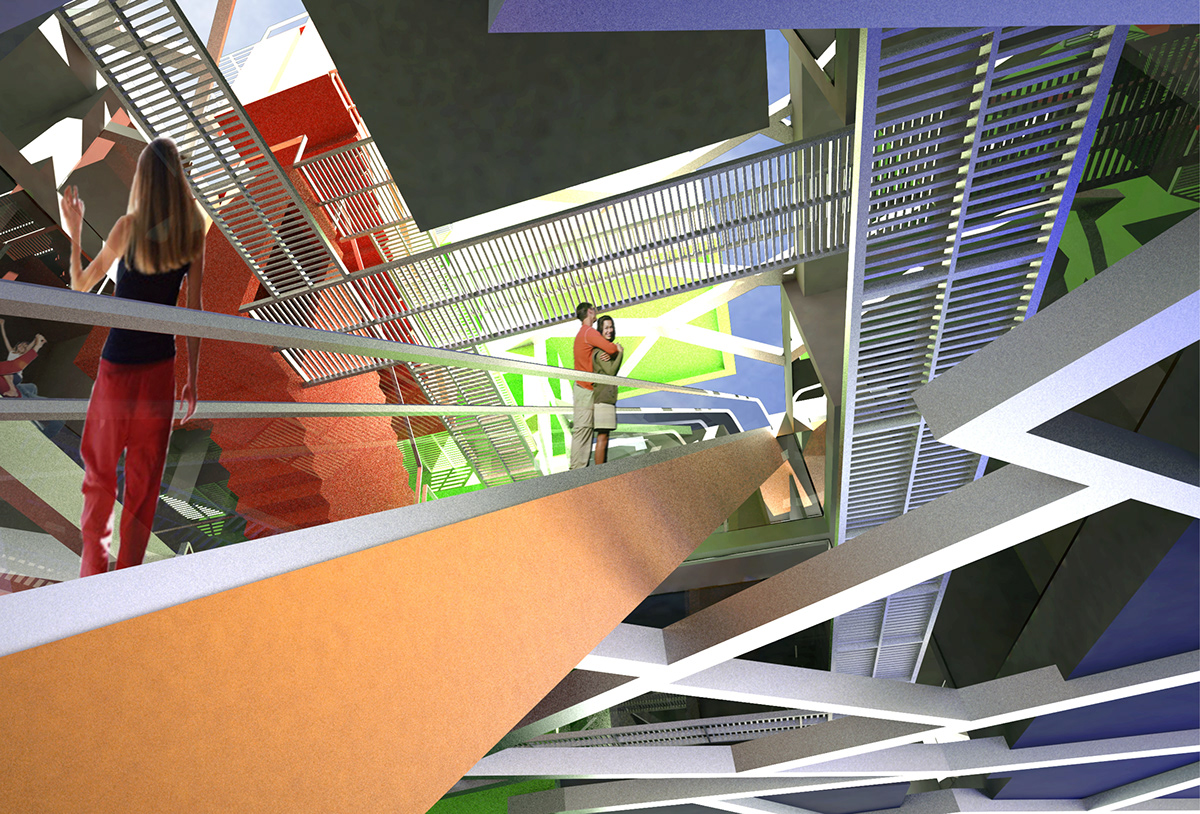
open space IV: escalator to roof deck II (E)
